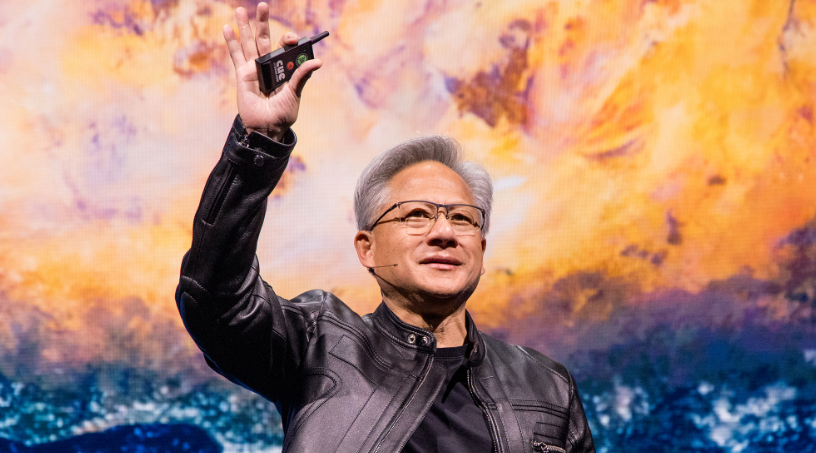NVIDIA has made history by becoming the largest stock in the S&P 500 with an unprecedented 8% weighting as of August 10, 2025, surpassing Apple’s 2023 record. This milestone marks the highest concentration of any single stock in the index since records began in 1981, driven by NVIDIA’s dominance in AI and semiconductor markets. The development signals both massive growth potential and increased volatility for the broader market.
NVIDIA Overtakes Apple to Set Historic Record in S&P 500 Weighting
In a milestone moment for the U.S. stock market, NVIDIA Corp. has achieved an unprecedented 8% weighting in the S&P 500 index as of August 10, 2025 — the highest share ever recorded since data tracking began in 1981. This remarkable feat surpasses the previous peak set by Apple Inc. in 2023, when the iPhone maker commanded just over 7% of the index.
This achievement cements NVIDIA as the single largest constituent in the S&P 500, representing a seismic shift in U.S. market dynamics. For perspective, such dominance by one company has never been seen before in the index’s history — not even during the exuberant Dot-Com Bubble of 2000, when Microsoft and General Electric reached only about 4% apiece.
Historic Context: Breaking a 40-Year Ceiling
The historical chart on S&P 500 leadership paints a telling picture. In 1984, IBM peaked at a 6% share — a figure that stood as a benchmark for decades. Even during the most speculative periods of tech enthusiasm, such as the late 1990s, no company managed to command the level of market concentration NVIDIA now enjoys.

Notable milestones from the chart include:
- IBM: 6% in 1984, with a P/E ratio of 11.
- Apple Inc.: Over 7% in 2023, P/E ratio of 31.
- Microsoft Corp.: 4% peak in 1999, P/E ratio of 62 at the time.
- General Electric Co.: Around 4% in the early 2000s.
- Exxon Mobil Corp.: Multiple peaks in the early 2000s at approximately 4%.
What makes NVIDIA’s rise extraordinary is that it not only shattered these records but did so with a P/E ratio of 58, reflecting high investor expectations for future earnings growth — a level of valuation that rivals historical tech bubbles.
NVIDIA’s Path to the Top
The surge in NVIDIA’s valuation and S&P 500 weight is directly tied to its dominance in the AI and semiconductor sectors. Over the past three years, the company has emerged as the undisputed leader in graphics processing units (GPUs), which are now the backbone of artificial intelligence infrastructure worldwide.
Massive demand for AI computing power, fueled by the explosion of generative AI models, cloud computing expansion, and data center upgrades, has put NVIDIA at the center of a global technology shift. Partnerships with leading cloud providers, AI startups, and research institutions have further reinforced its market position.
The company’s revenue growth has been meteoric, with quarterly results repeatedly surpassing Wall Street expectations. This financial momentum, combined with long-term AI adoption trends, has helped justify investor optimism, driving both share price and market cap higher.
Comparison to Previous Market Leaders
Looking at past S&P 500 leaders, NVIDIA’s 8% share stands out not just for its scale but also for the level of sector concentration it represents.
During the Dot-Com era, market leadership was shared more evenly among several technology companies. Microsoft, Cisco, and Intel all commanded significant weights, but none exceeded 5%. Similarly, in the 1980s and 1990s, market dominance often rotated between industrial and energy giants like IBM, General Electric, and Exxon Mobil.
Apple’s rise in the 2010s and early 2020s marked a turning point toward single-company dominance, but even Apple’s record-breaking run in 2023 at just over 7% has now been eclipsed. NVIDIA’s leadership marks a further step toward concentrated growth, with one company’s valuation accounting for nearly a tenth of the index’s movement.
Implications for the Market
NVIDIA’s unprecedented weighting in the S&P 500 carries both opportunities and risks for investors.
On the upside, the company’s market leadership signals confidence in AI as a transformative economic force, potentially setting the stage for long-term growth in technology infrastructure, robotics, autonomous systems, and other GPU-driven applications.
However, a high concentration in a single stock can also increase index volatility. If NVIDIA experiences a sharp price decline due to earnings misses, regulatory changes, or shifts in AI investment cycles, the broader S&P 500 could face outsized swings. This dynamic could amplify market risk for passive index fund investors whose portfolios are heavily tied to the S&P 500.
Future Outlook
The key question now is whether NVIDIA can sustain its dominance. History shows that holding the top spot in the S&P 500 for long periods is rare. Companies like IBM, General Electric, Exxon Mobil, and Apple all eventually ceded ground as market conditions shifted.
If AI demand continues to accelerate, NVIDIA could maintain or even increase its share. On the other hand, competition from other chipmakers, technological disruptions, or macroeconomic headwinds could lead to a rebalancing of market leadership.
For now, NVIDIA’s ascent stands as a defining moment in stock market history, signaling a deep investor belief in AI’s transformative potential. It also underscores a broader trend toward market concentration, where a single company’s performance can significantly sway the direction of one of the world’s most important equity benchmarks.

